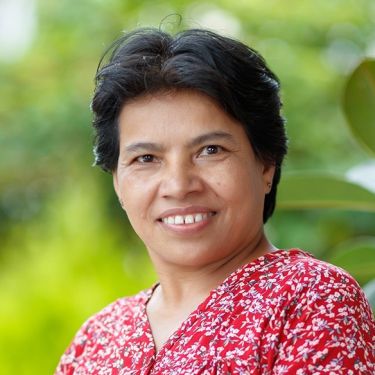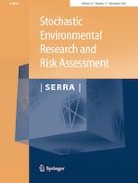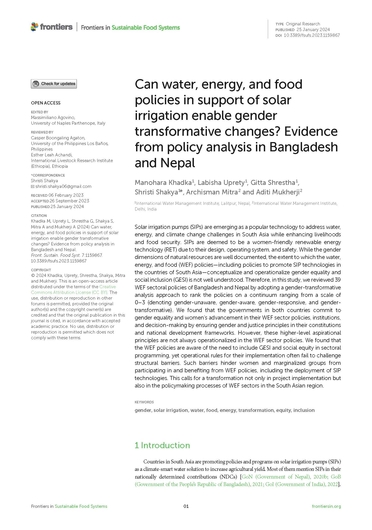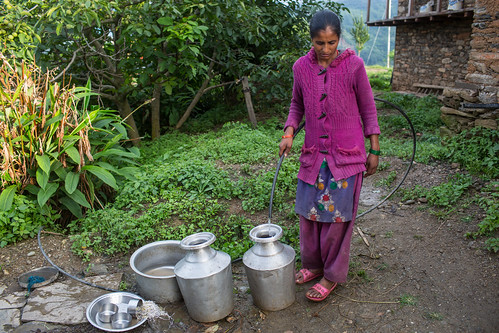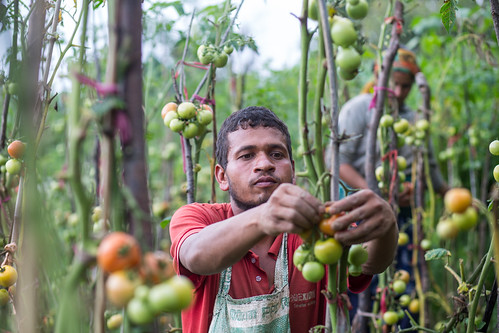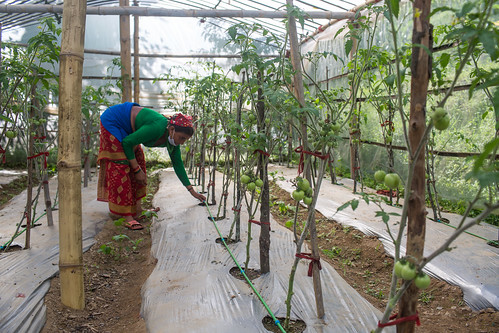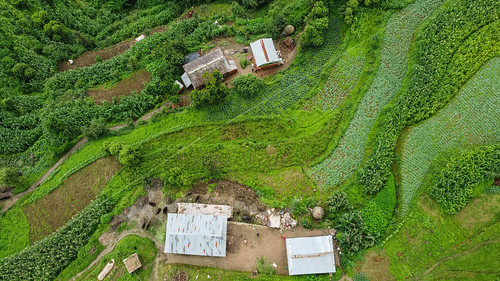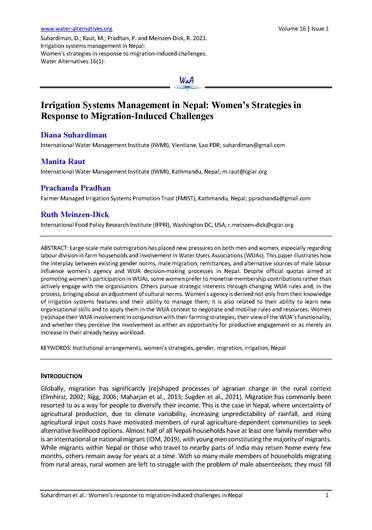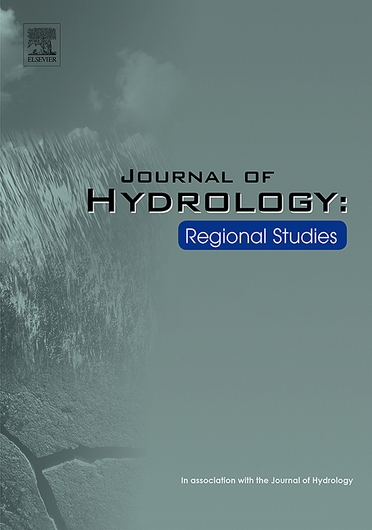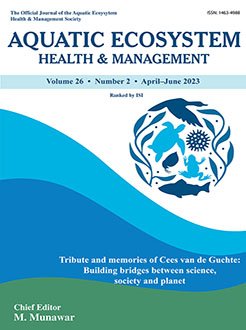Nepal
is endowed with abundant water resources. However, much of the population struggles to access safe and reliable water for drinking, sanitation and agriculture. Population growth, land degradation, inequitable landownership and weak institutional capacity are major challenges for water resources management, as are the norms surrounding gender, ethnicity, caste, class, region, and disability. Nepal has a cultivated area of 2,642,000 ha (18% of its land area), of which two-thirds (1,766,000 ha) is potentially irrigable. At present, 42% of the cultivated area has irrigation of some sort, but only 17% of the cultivated area has year-round irrigation. An estimate shows that less than 8% of the country’s water potential is used for irrigation. Nepal is extremely vulnerable to climate change, and this has radically changed seasonal water availability, causing droughts during the dry season and increased flooding during the monsoon season. The migration of men and youth from rural areas in search of better employment has had a drastic effect on rural livelihood systems as farmlands are left fallow. It has, however, created an opportunity for women to engage in climate-resilient agriculture, and empower them as role model agro-entrepreneurs and farm managers, promoting their role in sustainable food systems and irrigated agricultural value chains.
In 2015, Nepal became a Federal Democratic Republic, ceding significant powers to 753 local governments, including exclusive and concurrent rights to develop, manage and use water resources and watersheds within their jurisdiction. The government aims to triple per capita income to USD 12,000 by 2044. Achieving this will require a substantial improvement to management and governance of water resources.
IWMI
uses interdisciplinary research to study the connections between food systems and water management in the context of rural transformation, including the growing involvement of women in agriculture. Currently, we are investigating whether solar-powered irrigation can be beneficial to smallholder farmers, including women farmers, through a project funded by the Swiss Agency for Development and Cooperation (SDC) that also has activities in Bangladesh, India and Pakistan. Nepal has already installed around 1,600 solar-powered pumps, many of which were provided by the Alternative Energy Promotion Centre (AEPC), a government agency. AEPC is working with IWMI to analyze the impact of the subsidized pumps on farmer livelihoods. In addition to the overall economic and technical efficiency of the solar irrigation program, we are particularly interested in identifying how it affects gender equity and inclusion. The project is also piloting the potential additional benefits to farmers when connecting their solar-powered pumps to the national grid. The outcome will be a series of policy options for sustainable solar irrigation.
Currently, with support from the United States Agency for International Development (USAID), and as part of the Cereal Systems Initiative for South Asia (CSISA), IWMI is leading Work Package I of the Nepal Covid-19 Response and Resilience Activity being implemented by the International Maize and Wheat Improvement Center (CIMMYT). We are analyzing water resources and systemic barriers, and opportunities influencing the scaling of farmer-led irrigation development in the Western Plains of Nepal. We are also analyzing water access, policy, governance, institutional arrangements, gender equality and social inclusion, agricultural value chains and irrigation supply chains that influence the scaling of farmer-led irrigation development in Nepal. Using these hydrological and social research findings, along with groundwater monitoring and integrated decision support system modelling carried out by other partners, the aim is to develop a framework on sustainable and inclusive irrigation development in Nepal in multi-stakeholder dialogue processes for long-term investment.
A
recent project, funded by the Asian Development Bank, aimed to enhance watershed resilience in the face of climate change. An early phase of the project mapped 135 small upland watersheds and found them to be extremely vulnerable. Subsequently, IWMI researchers identified sources of spring water in mountain ecosystems, and delineated potential areas for interventions to augment spring recharge and increase the availability of water. Likely interventions include afforestation, small ponds and reservoirs, and various land conservation practices.
A project titled Digo Jal Bikas analyzed the trade-offs between water and development in a future governed by climate change. The project, funded by USAID, started by building an extensive knowledge base on water demands and risks in the river basins of western Nepal. Hydro-economic modelling helped us to explore water allocations and the trade-offs that might be needed under future climate scenarios. The knowledge, tools and models designed for the project were incorporated into policy and management guidelines, which were co-developed with government and community stakeholders. This project, which concluded recently, has already had an impact: its modelling data were used by the government to prepare the national irrigation master plan.
IWMI is supporting another project by the International Development Research Centre (IDRC), Canada, through examining the natural drivers of water-related disasters, and providing technical support to the analysis of gender and social inclusion. Other project partners – Nepal Water Conservation Foundation and Policy Entrepreneurs, Inc. – are analyzing the social and development drivers of water-related disasters. Past actions by the government have focused mainly on rescue and relief efforts rather than disaster preparedness and planning. Working closely with the Nepal Water Conservation Foundation, IWMI is helping to develop strategies for increasing the resilience of local communities, especially those left behind and vulnerable groups, to water-related disasters, thereby reducing the loss of life and damage caused to property.
Nepal’s federal
governance system provides important opportunities for gender and socially inclusive development. IWMI is committed to supporting the Government of Nepal, particularly by building capacity in data acquisition, evidence-based planning and policy making. A project supported by the Australian Centre for International Agricultural Research (ACIAR) facilitated access to technologies and inputs that improve dry-season farming for agricultural collectives of women, and tenant and marginal farmers. The group farming approach has been found to increase the bargaining power of women and poor farmers, and hence their access to key agricultural inputs, including irrigation equipment. It also facilitates income-generating opportunities in the context of deeply embedded unequal power relations. Another project is working in countries across Asia, including Nepal, to determine why so many men and youth are leaving the rural areas, and how this mass migration is transforming the social, political and cultural landscapes in these areas. Our aim is to learn how to harness this transformation to stimulate more sustainable, inclusive and equitable rural growth. The project identifies strategies that use a ‘positive’ approach to migration to bring about more balanced agrarian change, as well as to make migration more empowering. This will require tackling structural constraints and impediments to economic development, such as gender inequity and the exclusion of youth from decision-making processes.
IWMI researchers are also examining the links between power relations and the functionality of rural water supply systems. Populations with different social identities, especially the poor, people with disabilities, sexual and gender minorities, Dalits, and rural women and girls, are disproportionately impacted by poorly–managed systems, while those with social power and men make most of the decisions. Nepal’s constitution calls for proportionate representation of women and marginalized groups in all state bodies. National sectoral policies also have affirmative action policies, which state that at least 33% of members in community institutions, including local water user committees, should be women. Nevertheless, due to systemic barriers and unequal gender and social power relations at all levels, the participation of women and other marginalized groups in community water management processes remains mostly tokenistic. Traditional mindsets also block women’s meaningful participation in water governance, but that may be changing as a new, more empowered generation of women comes of age. Through a project supported by Australia’s Department of Foreign Affairs and Trade (DFAT), IWMI hopes to influence policy makers to ensure inclusive and equitable access to safe water, and to support the meaningful involvement of women and men with different social identities in rural water supply systems.
